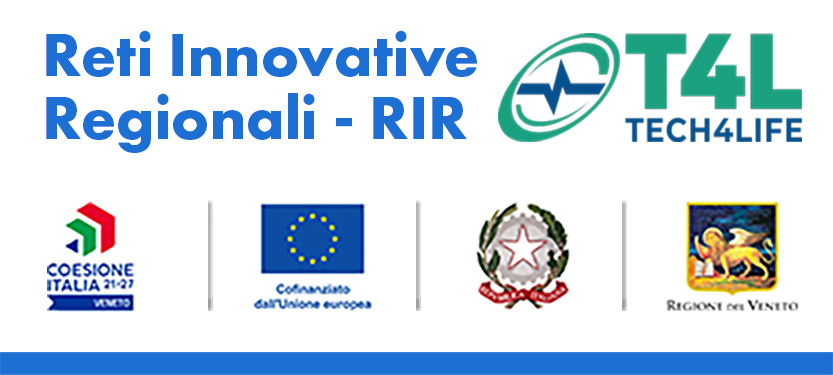
Progetti Nazionali
Progetti in corso - RIR - Reti Innovative Regionali
Progetti in corso - RIR - Reti Innovative Regionali
Titolo: INTELLI-MI – Tecnologie Intelligenti per la Medicina di Innovazione
Bando: Finanziamento di progetti di ricerca e sviluppo realizzati dalle Reti Innovative Regionali e dai Distretti Industriali (DGR n. 729 del 26 giugno 2024)
Durata: 31 mesi
Responsabile scientifico: Prof. Stefano Moro
Budget totale: 32.000 €
Abstract:
INTELLI-MI si focalizza sull’utilizzo delle Tecnologie Intelligenti hardware e software nel settore Health. Il progetto mira a potenziare ed efficientare tale settore con l’applicazione delle tecnologie abilitanti di Industria 4.0 mediante la realizzazione di Sistemi Intelligenti che coprono l’intero spettro dal “micro” (omiche, biologia molecolare), al “macro” (sistemi informativi, robotica). Le tecnologie intelligenti sviluppate in INTELLI-MI saranno gli elementi costitutivi per la realizzazione di un backbone end-to-end, solido, affidabile, efficiente, aperto e flessibile a supporto delle diverse fasi di progettazione, caratterizzazione, validazione e prototipazione dei processi in ambito biomedicale e sanitario.
INTELLI-MI è interdisciplinare, coinvolgendo sia le scienze dure (fisica, matematica), che le scienze applicate (informatica, ingegneria), le scienze biologiche (omiche, biologia molecolare, chimica farmaceutica), e le scienze umane (diritto), riproducendo il contesto operativo del settore target. L’infrastruttura realizzata includerà tecnologie informatiche, fisiche, matematiche, chimiche e ingegneristiche, opportunamente declinate in ambito eHealth. La struttura del progetto si basa sull’approccio bottom-up, che a partire dalle scienze di base (fisica, biologia, biologia molecolare), che si istanziano nella Bio-Informatica e nelle Bio-Tecnologie, passa per la Bio-Fisica e la Bio-Ingegneria, che si collocano al successivo livello tecnologico, per arrivare alla realizzazione di sistemi hardware e software per specifiche applicazioni. Substrato comune a tutti gli ambiti di intervento sono le metodologie abilitanti proprie dell’Information & Communication Technologies (ICT), e dell’AI, da intendersi in senso lato, ovvero come superset che include le diverse declinazioni della Machine Learning (ML), Deep Learning (DL) e metodi classici di analisi dei dati, che intervengono quali strumenti imprescindibili a supporto delle attività in tutti gli ambiti dal “micro” al “macro”. Complessivamente, INTELLI-MI contribuirà significativamente all’avanzamento del SOA a livello scientifico, all’efficientamento e all’introduzione di nuove funzionalità in ambito Bio- e alla sostenibilità, mediante la costituzione di un ecosistema di tecnologie intelligenti su cui far crescere la prossima generazione di sistemi intelligenti in ambito Health.
Sito del progetto: www.tech4life.it
Progetti in corso - Fondazione Cariparo - Ricerca scientifica di eccellenza 2024

Progetti in corso - Fondazione Cariparo 2024 - Ricerca scientifica di eccellenza
Titolo: Lipid Droplets and mitochondria: friends or foes in metabolic syndrome?
Bando: Fondazione Cariparo – Progetto di Eccellenza 2024
Durata: 3 anni
Responsabile scientifico: Prof.ssa Marisa Brini
Budget totale: 399.300 €
Abstract:
Obesity has a high clinical impact on human health given its associated complications such as type 2 diabetes mellitus and cardiovascular diseases that predicate the onset of metabolic syndrome. In conditions of energy excess, adipose tissue undergoes expansion through both adipocyte hyperplasia and hypertrophy. Lipid droplets (LDs) are the primary lipid storage and act as hubs for lipid metabolism and signaling. Their pivotal role extends to influencing cellular metabolism by interacting with various organelles, particularly mitochondria (MT). Along with mass enlargement, adipocytes develop biochemical and metabolic abnormalities also linked to MT damage. Dysfunctional adipocytes act as “immune” cells producing inflammatory cytokines, recruiting macrophages, and promoting a systemic chronic low-grade inflammatory status. Several studies, mainly performed on liver, have revealed that LDs-MT association increases upon high fat diet and inflammation conditions. The precise mechanisms determining the metabolic signature to the LDs-associated MT and the dysfunctions that result from unbalanced proportions of peridroplet and cytosolic MT remain to be explored. In this project we propose to undertake a comprehensive study to investigate the LDs-MT interactions in adipocytes, leveraging both 3T3-L1 cells and mouse or human primary cultures. We aim to mimic metabolic alterations observed in obesity such as hyperglycemia and high free fatty acids/triglycerides, alongside inflammatory stimuli. The role of adipocytes/macrophages crosstalk and the possibility that the modulation of mitochondrial Ca2+ handling could represent a valuable target for mitigating the inflammatory response in dysfunctional adipocytes will be investigated with a specific focus on its impact on LDs-MT contacts. Understanding the roles and mechanisms governing MT tethering to LDs could offer new points of intervention in metabolic diseases, potentially paving the way for innovative therapeutic strategies.
Progetti in corso - PRIN PNRR 2022

NOP receptor active structure, transducerome, and biased signaling
Titolo: NOP receptor active structure, transducerome, and biased signaling
Bando: PRIN PNRR 2022 – P20225HP4C - LS7
Data di inizio: 30 novembre 2023
Durata: 24 mesi
Referente scientifico UNIPD e Coordinatore del progetto: Prof. Girolano Calò - Università degli Studi di Padova
Partner di progetto: Prof Remo Guerrini – Università degli Studi di Ferrara
Budget totale: 299.569 €
Abstract:
G protein-coupled receptors (GPCR) control a large number of biological functions via G protein signaling. G proteins are heterotrimers composed of alpha, beta, and gamma subunits. There are 16 genes encoding for alfa subunits, 5 for beta, and 14 for gamma, giving the GPCR a wide spectrum of signaling possibilities. Interestingly, some synthetic GPCR ligands, named biased agonists, stimulate receptor signaling via the selective activation of a specific subset of G proteins. Recent evidence suggests that biased agonists may dissect the beneficial vs. unwanted effects deriving from the stimulation of a given receptor, a concept known as functional selectivity. This observation may lead to the development of biased agonists as more effective/better-tolerated drugs.
The nociceptin/orphanin FQ (N/OFQ) - NOP receptor system modulates different functions in the CNS and periphery, and NOP agonists have therapeutic potential for treating pain, anxiety, locomotor and sleep disorders, drug abuse, and cough. The aim of this project is to explore the molecular basis of functional selectivity at NOP receptors. This will be achieved by developing novel assays to identify and pharmacologically characterize NOP biased agonists, generating and validating the 3D model of the active NOP receptor, and developing structure-based and effector-specific structure-activity studies in order to identify novel compounds showing a large preference for a specific signaling pathway. The experimental techniques and protocols, processes, and concepts that will be developed by a highly collaborative effort of medicinal chemists, structural biologists, molecular biologists, and pharmacologists will be of great value in the future for extending this kind of study to other GPCRs. Thus, this project may greatly contribute to improving our knowledge about functional selectivity and exploiting biased agonism as a strategy for developing a new generation of safer/more effective drugs
Progetto finanziato dall'Unione Europea nell'ambito dell'iniziativa Next Generation EU e dal Ministero dell'Università e della Ricerca italiano, programma PNRR.
Progetti in corso - PRIN 2022
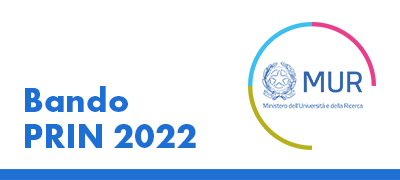
Targeting the protein kinase CK1delta as a strategy to enlarge the therapeutic toolbox against Amyotrophic Lateral Sclerosis (ALS)
Titolo: Targeting the protein kinase CK1delta as a strategy to enlarge the therapeutic toolbox against Amyotrophic Lateral Sclerosis (ALS)
Bando: PRIN 2022 – 20227K7YJS - PE5
Durata: 2 anni
Coordinatore: Stefano Moro
Partner di progetto: Stephanie Federico – Università degli Studi di TRIESTE; Vittoria Colotta – Università degli Studi di FIRENZE
Budget totale: 202.938 €
Abstract:
The most widespread oral treatment for amyotrophic lateral sclerosis (ALS) is Riluzole, a drug approved in 1996 by the European Medicines Agency (EMA). Despite the drug is in use for a long time its mechanism of action is still obscure. It was initially believed that Riluzole plays a role in modulating a protein channel involved in ALS progression. Recently, we hypothesized through the use of computational simulations that Riluzole could have a further or different mechanism by inhibiting a protein named CK1δ, a well-characterized protein kinase that plays a crucial role in the ASL etiopathogenesis. We then confirmed in vitro the inhibitory role of Riluzole on CK1δ. In addition, we postulated the link between CK1δ inhibition and the effect of Riluzole in ALS. In particular, TDP-43 (TAR-DNA binding protein-43) is a protein that is more prone to aggregation when phosphorylated by CK1δ, thus it is sequestered from its physiological role in the cell. TDP-43 led to the expression of EAAT2 (Excitatory amino acid transporter 2), a transporter that is responsible to transport glutamate from the extracellular side to the intracellular one, thus removing glutamate that is responsible for excitotoxicity in ALS. Thus, we suggest that CK1δ inhibition leads to a decrease of extracellular glutamate via TDP-43 and EAAT2. In this project, we are aimed to validate this finding in an ALS model by using flies to test Riluzole and its metabolites. Understanding the molecular basis in the insect model will help us to better elucidate the Riluzole mechanism of action and to design novel molecules. Riluzole mitigates the progression of the illness, but unfortunately with only limited improvements. In light of that, this project aims to design more potent molecules targeting CK1δ that mimic the Riluzole but with improved potency that reasonably could have a relevant impact on the field. Computational methods will help to select promising molecules to be synthesized as potential potent CK1δ inhibitors with favorable ADME-Tox (absorption, distribution, metabolism, excretion, and toxicity) properties, then, after their synthesis, compounds will be tested in a CK1δ activity assay to select most potent derivatives to be directly investigated in the Drosophila ALS model. Concluding, the expected results from this coordinated interdisciplinary approach are to validate the proposed mechanism of action of Riluzole in ALS and to develop a few potent CK1δ inhibitors effective in the ALS model that could represent hit compounds for the development of new therapeutic strategies against ALS.
Optimization of novel scaffolds against SARS-CoV-2 main protease (Mpro)
Titolo: Optimization of novel scaffolds against SARS-CoV-2 main protease (Mpro)
Bando: PRIN 2022 – 2022Y5C7KL - PE5
Durata: 2 anni
Coordinatore: Alice Sosic
Partner di progetto: Ciro Milite – Università degli Studi di SALERNO
Budget totale: 190.065 €
Abstract:
Early in 2020 SARS-CoV-2 has spread from Wuhan (China) to countless countries around the world with devastating effects on public health and the global economy. Following an unprecedented scientific effort, new effective vaccines were developed and approved for emergency use. However, short immunological protection, vaccine hesitancy and the continuous occurrence of Spike variants are expected to limit vaccine efficacy to control the virus circulation. The development of new drugs is therefore a valuable tool to fight the pandemic outbursts, and the first oral antiviral against Covid-19 (Paxlovid) based on a peptidomimetic inhibitor of the main protease of SARS-CoV-2 (Mpro) has been recently approved. Mpro has an essential role in the viral life cycle and is highly conserved among different coronaviruses thus representing an appealing antiviral target. In this project, we will develop new and valuable Mpro inhibitors for coronavirus disease treatment, featuring different chemotypes compared to the small molecules currently under development. As a starting point, we will exploit the important results already obtained by our interdisciplinary consortium: recently, we identified three highly promising Mpro inhibitors hits, characterized by good activity and, above all, by novel chemical scaffolds. Thus, in this project we aim at the employment of the experience acquired in the field for the development of new and valuable Mpro inhibitors as drug candidates for coronavirus disease treatment.
To this goal, we have defined the following main points that will run in interactive and iterative cycles:
1) Computer-Aided optimization of the hits;
2) Intensive campaign of chemical synthesis to obtain large collection of compounds structurally related to the identified hits;
3) In vitro evaluation of inhibitory potency by means of a screen platform (biochemical FRET-based primary screening and biophysical validation of inhibitors);
4) Characterization of inhibitors-target recognition by X-ray crystallographic studies, NMR-based assays and HDX-MS analysis of inhibitors-protein complexes;
5) Evaluation of the antiviral activity by a phenotypic cell-based screening and by viral cycle-based analyses.
In summary, our research plan combines cutting-edge computational drug design approaches and robust synthetic strategies with state-of-art biophysical and structural biology techniques, followed by a thorough characterization of the antiviral profile of the identified leads. The results acquired will improve the knowledge of the structure-activity relationships for Mpro inhibition while, at the same time, building processes, partnership and preparedness valuable to face future medical threats from epidemic- or pandemic-prone emerging viruses.
Neuropeptide S receptor: understanding the molecular bases of ligand binding and receptor activatio
Titolo: Neuropeptide S receptor: understanding the molecular bases of ligand binding and receptor activation
Bando: PRIN 2022 – 2022FPWYA8 - LS1
Durata: 2 anni
Coordinatore: Antonella Ciancetta Università degli Studi di FERRARA
Partner di progetto: Laura Acquasaliente
Budget totale: 179.874 €
Abstract:
G Protein Coupled Receptors (GPCRs) are the largest family of membrane proteins representing the target for ~25% of marketed drugs. Class A GPCRs comprise validated targets for central nervous system (CNS), cardiovascular, gastro-intestinal, respiratory, and oncologic disease treatment. About one third of these receptors are activated by endogenous peptides. Neuropeptide S (NPS) is a 20-amino acid peptide activating a formerly orphan GPCR154 - now NPS receptor (NPSR), which activation promotes cellular excitability via Gq and Gs signalling. Despite NPS expression being localised to a few brain areas, NPSR-mediated effects are widely distributed in CNS regions associated with stress response, memory, and arousal regulation. Studies in both rodents and humans suggest that NPSR antagonists show potential to attenuate drug-seeking behaviours, while NPSR agonists represent innovative non-sedating anxiolytics with memory enhancement effects. Notably, NPSR anxiolytic effects are mediated exclusively by Gq signalling, thus suggesting the search for Gq-biased NPSR agonists as a promising strategy for innovative CNS drugs development. Despite the huge interest and intense drug discovery efforts over the last two decades, NPSR remains an elusive target for which no high-affinity drug-like clinical candidates are available yet. There is therefore a compelling need for the development of small-molecule NPSR agonists that can help elucidate uncharted aspects of the NPS/NPSR system pharmacology and of drug-like antagonists that can contribute to its therapeutic validation as drug target for CNS diseases. By harnessing our joint expertise in molecular modelling, synthetic chemistry, biochemistry, and in vitro pharmacology, this project aims at unleashing NPSR therapeutic potential via a thorough investigation of its ligand binding and activation mechanisms. The proposed research plan will provide novel assays and protocols for NPSR ligand characterisation that will provide insights on peptide and non-peptide binder SARs, receptor activation, and G protein biased signalling. We therefore believe that the results this research will yield will usher in a new era of structure-based design of novel NPSR modulators with improved efficacy and drug-like properties, a challenge that has remained unmet in the last two decades. The application of the computational and experimental techniques, protocols, and concepts that will be developed by a collaborative effort of scientist with complementary expertise will extend beyond NPSR and pave the way for extending our multi-disciplinary approach to other GPCRs. Hence, the proposed plan and the tools it will create have the potential to speed up the disclosure of novel drug targets, contribute to the development of novel therapeutic strategies to treat CNS diseases, and ultimately increase the number of safer and more effective drugs approved.
Kainate receptor antagonists for pharmacological neuroprotection in Parkinson’s Disease
Titolo: Kainate receptor antagonists for pharmacological neuroprotection in Parkinson’s Disease
Bando: PRIN 2022 – 20229292AN - LS5
Durata: 2 anni
Coordinatore: Flavia Valtorta – Libera Università "Vita Salute S.Raffaele" MILANO
Partner di progetto: Michele Morari Università degli Studi di Ferrara; Stefano Comai
Budget totale: 205.500 €
Abstract:
Background. Parkinson’s disease (PD) is a neurodegenerative disorder characterized by progressive dysfunction and death of dopamine (DA) neurons in the substantia nigra pars compacta (SNc) that project to striatum. Since synapse dysregulation and loss of synaptic homeostasis are recognized as early and key events in PD pathogenesis, it is conceivable that the early modulation of appropriate synaptic targets provides neuroprotection. Rationale and objectives. We aim at investigating a novel synaptic target in PD pharmacotherapy, namely the kainate receptor (KAR). KAR is a druggable glutamate receptor subtype that until now has received much less attention than other receptors, despite its well-recognized ability to modulate neurotransmission, neuronal excitability and synaptic plasticity. Preclinical studies from our and other groups have shown that KAR is expressed in DA neurons and contributes to DA neuron death in a genetic form of juvenile PD. Studies also indicate that pharmacological KAR modulation might provide neuroprotection in PD. Since a neuroprotective therapy for PD is still lacking, research efforts aimed at validating novel targets for neuroprotection are critically needed. In this project, we will test the hypothesis that pharmacological antagonism of KAR receptor provides neuroprotection in preclinical models of genetic and idiopathic PD, and investigate the underlying cellular and molecular mechanisms of neuroprotection. Research team and available resources. The project involves three Units with proven and complementary expertise in the study of synaptic mechanisms in physio-pathological conditions and in the molecular/cellular neurobiology of PD. Preclinical models for this project are already available in the laboratories of the participants and include state-of-the-art in vivo murine models of genetic juvenile PD (parkinR275W knock-in mouse) and idiopathic PD (iPD) (based on overexpression or spreading of aSyn), along with in vitro human DA neurons (iDA) carrying PD-associated mutations derived from human induced pluripotent stem cells (iPSCs). The three Units have been collaborating for several years, as shown by several common publications and by the preliminary data deriving from their ongoing collaboration.
EVs-like nanoparticles carrying oncolytic viruses as a novel platform for cancer treatment (EVCARE)
Titolo: EVs-like nanoparticles carrying oncolytic viruses as a novel platform for cancer treatment
Acronimo: EVCARE
Bando: PRIN 2022 – 2022H3AM7R - LS7
Durata: 2 anni
Coordinatore: Silvia Franzé – Università degli Studi di MILANO
Partner di progetto: Garofalo Mariangela
Budget totale: 203.333 €
Abstract:
NRAS-mutant melanoma is an aggressive cancer with increasing incidence worldwide and poor prognosis, also due to the lack ofeffective therapeutic options. Oncolytic viruses (OVs), namely replication viral strains that specifically infect and lyse cancer cells, represent an attractive approach. Nevertheless, their systemic administration is limited by the production of neutralizing antibodies that can inhibit the virus entry and infectivity. To solve this issue, OVs should be encapsulated in carriers able to protect the viruses against their disruption by the host immune system while efficiently targeting the therapeutic particles into the neoplastic tissue.Extracellular vesicles (EVs) are naturally occurring cargo delivery agents that have been recently proposed for the delivery of OVs due to their ability to spontaneously encapsulate the virus and their intrinsic tumor tropism. However, the lack of standardized isolation protocols limits the production on large scale and then the use in clinical practice. Interestingly, liposomes are versatile drug delivery systems with a composition similar to cell membranes and EVs, being composed of a lipid bilayer enclosing an aqueous core, whose preparation methods have been implemented on large scale with several medicinal products already available on the market. Liposomes can accumulate in tumors thanks to the enhanced permeability and retention effect (EPR) and are widely exploited for the delivery of labile molecules (e.g. proteins, nucleic acids) to protect them from in vivo degradation. They have been proposed also for the delivery of OVs, even if few scientific evidences are reported in literature. Basing on these premises, the EVCARE project aims to provide a strategy for the treatment of NRAS+ melanoma by combining the carrier ability of liposomes (for the systemic administration of OVs) with the natural tropism of tumor-derived EVs, by designing EVs-like liposomes. To pursuit this goal, the research units in first instance will prepare a series of OVs-loaded “conventional” liposomes with different composition. In parallel, EVs will be isolated from NRAS+ melanoma cells and the lipidomic and proteomic profile will be fully analyzed to select functional lipids and transmembrane proteins for the design of EVs-like liposomes. EVCARE will focus on: i) in vitro studies of the viral activity of OVs loaded conventional and EVs-like liposomes on NRAS+ melanoma cancer cells, ii) in vivo efficacy studies, iii) in vivo and ex vivo biodistribution studies to analyze the EVs and EVs-like liposomes tumor tropism and the ability of prepared carriers to avoid virus neutralization. Altogether the data collected could suggest a procedure for the systemic administration of OVs using liposomes and EVs carriers. The obtained findings, by using NRAS+ melanoma as cancer model, may be translated to other forms of cancer opening the path to the development of a novel platform for systemic cancer treatment.
Development and application of organelle-specific fluorescent chemical indicators for real-time calcium imaging
Titolo: Development and application of organelle-specific fluorescent chemical indicators for real-time calcium imaging
Bando: PRIN 2022 – 202282LYW5 - LS1
Durata: 2 anni
Coordinatore: Diana Pendin – Consiglio Nazionale delle Ricerche
Partner di progetto: Andrea Mattarei
Budget totale: 197.600 €
Abstract:
Calcium (Ca2+) signalling represents one of the major signal transduction pathways and many efforts have been devoted to the generation of tools to measure intracellular Ca2+ concentration ([Ca2+]). As a result, cytosolic [Ca2+] can be routinely measured using standard fluorescence microscopy techniques. In recent years, attention moved also to Ca2+ dynamics inside organelles and the need for organelle-targeted indicators has become critical. Several genetically-encoded Ca2+ indicators (GECIs) targeted to specific organelles have been developed so far. However, they suffer from different drawbacks i.e. the need of transfection/infection procedures to be delivered - not applicable to all cell types and hardly suitable for high-throughput screenings - slow kinetics of Ca2+ binding and unbinding, low dynamic range, affinity for Ca2+ not readily controllable. The major goal of this project is the development of new chemical fluorescent tools to monitor real time [Ca2+] in specific subcellular compartments. The idea is to design a synthetic molecular toolkit built on consolidated BAPTA-based ratiometric Ca2+ probes that can easily accommodate organelle-targeting molecular features through a one-pot click reaction. A similar strategy has proven successful for mitochondrial matrix targeting and recently led us to the generation of the first mitochondria-targeted ratiometric chemical Ca2+ sensor mt-fura- 2. New dyes will be extensively characterized in vitro and in situ, in a feedback circuit between testing and synthetic optimization of the molecules. The best performing probes will be evaluated in relevant experimental systems in which the use of GECIs is troublesome. Then functional indicators will be applied in an organelle-specific, real-time imaging-based screening of a compound library on cultured neurons. This will enable the unique opportunity of identifying small molecules able to modulate Ca2+ homeostasis at the organelle level with an unprecedented specificity and resolution in brain cells. The molecules identified could represent a significant step forward in the identification of possible therapeutic strategies for a wide range of human brain disorders characterised by organelle Ca2+ imbalance. Besides, this will represent a proof of principle of the value of the innovative tools developed here. The project we propose applies organic dyes to the study of relevant biological systems, as a result of the fruitful convergence between chemistry and biology. While the former lays the foundation for organic synthesis techniques aimed at developing functional probes, the latter brings organelle biology and Ca2+ imaging. The partnership we propose is mandatory to achieve the expected results, ensuring a multidisciplinary environment and an optimal stage for the advancement of resources available in a rapidly developing research field.
Exploring Mitochondria-Lysosomes contact sites dynamics in neurodegeneration and cancer: novel targets for new biomedical strategies
Titolo: Exploring Mitochondria-Lysosomes contact sites dynamics in neurodegeneration and cancer: novel targets for new biomedical strategies
Bando: PRIN 2022 – 20223ABZ82 - LS1
Durata: 2 anni
Coordinatore: Marisa Brini
Partner di progetto: Marco Colasanti – Università degli Studi ROMA TRE; Consuelo Amantini – Università degli Studi di CAMERINO
Budget totale: 187.474 €
Abstract:
Mitochondrial and lysosomal functions are intricately related and critical for maintaining cellular homeostasis, as highlighted by multiple diseases linked to dysfunction of both organelles. Recent studies have revealed the existence of mitochondria–lysosomes (MT–LY) contact sites and suggested that these inter-organelle membrane contacts play an important role both in health and disease. These contact sites are important to regulate the dynamics of their network and the bidirectional exchange of ions and metabolites (e.g., Ca2+, iron and lipids) between the two organelles. In this project, we aim to deeply explore whether and how perturbations of MT-LY contact sites can impact on up/downstream related cellular functions in physiological and pathological conditions (i.e., neurodegeneration and cancer). To do this we decided to articulate the project in three different major aims: i) Characterization of MT-LY contact sites either in dopaminergic cells lines expressing Parkinson disease (PD) related proteins or in astroglial/neuronal cells treated with Alzheimer’s disease (AD) related proteins; ii) Characterization of MT-LY contact sites upon metabolism modulation in dopaminergic and glioma cells and iii) Characterization of the impact of MT-LY contact sites modulation on intracellular signaling. For each aim, several tasks, characterized by a common denominator that is the full understanding of signaling process occurring at the mitochondria lysosome interface, will be considered. It should be pointed out that the deep understanding of how these exchanges occur in physiological and pathological conditions is rather limited by the absence of adequate tools to assess contact sites in living cells. The Unit of the Coordinator has recently developed contact sites sensors (SPLICS) based on splitGFP and bimolecular fluorescence complementation (BiFC) to directly monitor organelles contact sites remodeling by live cell imaging and confocal microscopy under different physio pathological conditions or upon specific treatments. This approach has permitted to establish that juxtapositions at narrow (8-10 nm) and wide (40-50 nm) distances between a given pair of organelles are present, and that their differently respond to mitophagy or autophagy stimuli and to the manipulation of specific tethering factors, thus documenting the existence of at least two types of contact sites. In this project, we aim to provide a thorough characterization of MT-LY tethering and functions by applying biochemical, molecular and cellular biology approaches and by addressing the following outstanding questions (for a detailed description see section 2): i) Do the PD or AD related proteins differently modulate (ER)-MT-LY crosstalk? ii) Does metabolic modulation of glycolysis, fatty acid oxidation or oxidative phosphorylation impact on (ER)-MT-LY interaction? iii) Does the (ER)-MT-LY crosstalk remodeling impact on intracellular signaling in neurodegeneration and cancer.
MitoMedChem for neurodegeneration
Titolo: MitoMedChem for neurodegeneration
Bando: PRIN 2022 – 2022CF5T45 - PE5
Durata: 2 anni
Coordinatore: Federico Da Settimo Pasetti – Università di PISA
Partner di progetto: Lisa Dalla Via; Sabrina Castellano – Università degli Studi di SALERNO
Budget totale: 203.333 €
Abstract:
In neurodegenerative diseases (NDs), neuroinflammation is implicated as a pathological contributor and microglia and astrocytes play a crucial role in such disorders, being key regulators of inflammatory responses in central nervous system. As mitochondrial dysfunctions can be associated to neuroinflammation, modulation of the activity of mitochondrial proteins, such as monoaminoxidase B (MAO-B) and Translocator Protein 18 kDa (TSPO) can be exploited both for research and therapy. In this project, we aim to identify mitochondriotropic compounds able to prevent/counteract neuroinflammation in human glial models by inhibition of MAO-B activity or modulation of TSPO function. The acquired results will improve the knowledge of the role of these proteins in NDs physiopathology and pave the way to future therapeutic approaches.
To this goal, we define the following main points that will run in interactive cycles:
1) Intensive campaign of chemical synthesis to obtain potent and selective MAO-B inhibitors and TSPO ligands with adequate physicochemical properties (WP1);
2) In vitro evaluation of potency and selectivity on human recombinant MAO enzymes of inhibitors (WP2) and kinetic/thermodynamic parameters of TSPO ligands (WP3) to select the best derivatives;
3) Evaluation of the effect of optimized MAO-B inhibitors (WP4) and TSPO ligands (WP5) in human glial models of neuroinflammation;
4) Investigation of selected TSPO ligands and MAO-B inhibitors for their ability to induce, alone or in combination, the shift from neurotoxic to neuroprotective phenotype of inflamed human glial cells (WP6).
We plan to reach these milestones sequentially:
1) Generation of collections of MAO-B inhibitors and TSPO ligands with defined physicochemical properties and metabolic profile;
2) Discovery of potent and selective MAO-B inhibitors and TSPO ligands exerting no cytotoxicity;
3) Identification of selected compounds able to reduce the intracellular ROS generation in human glial cell models. For TSPO ligands, a further purpose will be the identification of derivatives with neurosteroidogenic activity;
4) Evaluation of the ability of the selected compounds, alone or in combination, to induce the shift from neurotoxic to neuroprotective phenotype in human inflamed glial cells by quantification of ROS levels, anti and pro-inflammatory interleukins, and the neurotrophic factor BDNF. To meet this purpose, we can exploit the multidisciplinary expertise and the previous collaborative projects that successfully led the consortium to the identification of compounds able to modulate neuroinflammatory targets.
Progetti in corso - POC Regione Veneto (complementare AZIONE POR FESR 1.1.4 2022)
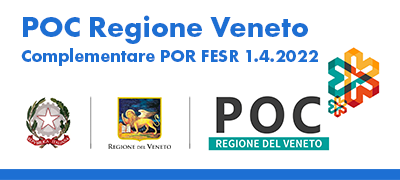
OLI.VA.RE - Valorizzazione e Riutilizzo delle materie prime seconde del frantoio
Titolo: Valorizzazione e Riutilizzo delle materie prime seconde del frantoio
Acronimo: OLI.VA.RE
Bando: DGR n. 1800 del 15 dicembre 2021 - Programma Operativo Complementare (POC) al POR FESR 2014-2020 FESR 2014-2020 - Regione Veneto
Durata: 30 mesi
Coordinatore: Stefano Dall'Acqua
Budget totale: 66.491,25 €
Abstract:
Il progetto “Valorizzazione e Riutilizzo delle materie prime seconde del frantoio” in sigla “OLI.VA.RE”, finanziato nel mese di luglio 2022, è stato presentato, a valere sulla DGR 1800/2021, da Società Agricola Moldoi Srl, aderente alla Rete Innovativa Regionale INNOSAP- Innovation For Sustainability in Agrifood Production. Alla Rete Innovativa, riconosciuta dalla Regione Veneto nel 2016, aderiscono più di cento fra PMI e Grandi Imprese del settore Agrifood e dell'indotto (incluse, per esempio, imprese chimiche; fornitori di tecnologie anche informatiche e produttori di macchine ed impianti).
Il Progetto intende utilizzare, in maniera sostenibile, le “materie prime seconde” derivanti dalla produzione dell’olio extravergine d’oliva prodotto in Veneto, valorizzando così il driver innovativo “Sostenibilità ambientale” e del riutilizzo di prodotti di “origine locale”. Le materie seconde provenienti dal frantoio rappresentano la fonte migliore per l’estrazione dei principi attivi di interesse salutistico, cosmetico e farmaceutico in quanto precedentemente lavorati e purificati dal frantoio. Tali materiali saranno utilizzati per realizzare prodotti cosmeceutici, integratori alimentari e prodotti per l’alimentazione animale, mediante processi ecosostenibili ed innovativi.
In sintesi, il progetto prevede le seguenti fasi di sviluppo di::
PROTOTIPO DI MANGIME DA DESTINARE AL CONSUMO ANIMALE
Il prototipo di mangime da destinare al consumo animale è avviato nella seconda fase rendicontale, dopo ulteriori investimenti mobili e strumentali (tecnologie di stabilizzazione, insacchettatrice silobag e/o altre attrezzature e soluzioni avanzate etc) da parte dei Partner produttore olivicolo e dell’allevatore.
A quel punto, il prodotto secondo diverrebbe una risorsa economica, vendibile ai produttori di mangimi e/o di integratori animali e/o direttamente agli allevatori. La stima del valore unitario dipende dal valore economico di prodotti omologhi al momento della valutazione (presumibilmente anche molto più alto dell’attuale, visto l’andamento in crescita di tutte le materie prime vegetali e non ad oggi rilevato).
PROTOTIPO DI INTEGRATORE DA DESTINARE AL CONSUMO ANIMALE
Il prototipo di integratore alimentare per ovini assumerà diversi possibili formati: in capsule, bustine, compresse a dose controllata, effervescente da diluire in abbeveratoio, sotto forma di soluzioni sciroppose.
PROTOTIPO DI INTEGRATORE DA DESTINARE AL CONSUMO UMANO
Il prototipo previsto consiste in capsule antiossidanti che andrebbero a contribuire al benessere del sistema cardiovascolare e alla normalizzazione dei valori pressori.
PROTOTIPO DI PRODOTTO COSMETICO e DENTISTICO
Il prototipo previsto consiste in soluzioni destinate all’uso cosmetico e dentistico.
Partner:
Società Agricola Moldoi srl di Sospirolo (BL) - capofila,
Consorzio Produttori Olivicoli di Malcesine, di Malcesine (VR),
Frantoio Bonamini Di Bonamini Giancarlo di Illasi (VR),
Società Agricola Moldoi Srl- SAM di Moldoi, Sospirolo (BL),
Società Semplice Agricola Veneto Ovini di Anguillara (PD).
Dipartimento di Scienze del Farmaco -DSF- Università degli Studi di Padova
Dipartimento di Management - DIMA - Università degli Studi di Verona.
Spesa ammessa: € 250.544,80
Contributo finale atteso: € 100.217,92
Progetti in corso - Fondo crescita sostenibile - MIMIT

Trattamento di carcinoma della mammella con linfociti T specifici attivati con materiali nanoparticellari (TALISMAN)
Titolo: Trattamento di carcinoma della mammella con linfociti T specifici attivati con materiali nanoparticellari (TALISMAN)
Bando: Ministero delle Imprese e del Made in Italy - Accordi di Innovazione D.M. 31 Dicembre 2021 e D.D. 14 Novembre 2022
Durata: 3 anni
Responsabile scientifico: Stefano Salmaso
Budget totale: 1.550.000 €
Abstract:
Il progetto è diretto allo sviluppo di una tecnologia appartenente all'ambito delle Tecnologie delle scienze della vita. Il progetto riguarda la seguente Area di Intervento: strumenti, tecnologie e soluzioni digitali per la salute e l'assistenza, compresa la medicina personalizzata. Nell'ambito di tale Area di Intervento il progetto è diretto allo sviluppo delle seguenti linee generali: Strumenti integrati, tecnologie, dispositivi medici, immaginografia medica, biotecnologia, nanomedicina e terapie avanzate (comprese terapia cellulare e genica), e soluzioni digitali per la salute umana e l'assistenza, tra cui IA, soluzioni mobili e telemedicina; affrontare al contempo, ove opportuno e sin dalle fasi iniziali, gli aspetti connessi a una produzione efficiente in termini di costi al fine di ottimizzare la fase di industrializzazione e il potenziale di innovazione per arrivare a un prodotto medicinale accessibile;
Progetti in corso - FSE+
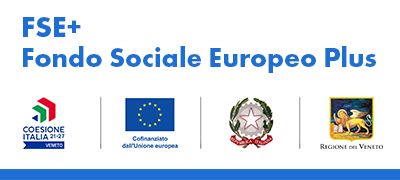
OliVENET - Prodotti ad alto valore aggiunto da scarti della filiera olearia
Titolo: OliVENET - Prodotti ad alto valore aggiunto da scarti della filiera olearia
Acronimo: OliVENET
Bando: FSE+ Regione Veneto - Bando DGR 553/2023
Durata: 18 mesi
Coordinatore: Stefano Dall'Acqua
Budget totale: 88.566 €
Abstract:
Prodotti ad alto valore aggiunto da scarti della filiera olearia, mangimi, biostimolanti, cosmetici ed integratori alimentari ad alto valore tecnologico e basso impatto ambientale da scarti di olive della regione Veneto. Verranno valorizzati i prodotti di scarto della filiera dell’oliva prodotti in Veneto. Il progetto sarà volto a sviluppare prodotti in base alle esigenze di industrie presenti nella Regione Veneto che sono attente alle risorse del territorio, puntano all'innovazione e credono alla fruttuosa collaborazione con le Università. Il progetto, con l'assegnazione di tre assegni di ricerca, punta ad investire e formare i giovani laureati in modo che possano apprendere conoscenze multidisciplinari. I giovani assegnisti verranno così coinvolti in un network di aziende e Università. L’esperienza permetterà la formazione di persone specializzate e qualificate nell’ambito agrifood.
Sostenibilità ambientale: valorizzazione dei prodotti di scarto della filiera dell’oliva, settore rilevante nella regione Veneto, sia dal punto di vista della qualità, sia dal punto di vista della tipicità unica del territorio Veneto.
Sostenibilità sociale: formazione di alto livello di assegnisti di ricerca che completeranno la loro formazione in maniera multidisciplinare permettendo il trasferimento tecnologico da università ed industria.
Sostenibilità economica: permettere la possibilità di creare nuovi prodotti e innovazione industriale che, a cascata, porti alla creazione di nuovi posti di lavoro. L’applicazione del principio dell'economia circolare, e quindi creare valore da ciò che oggi consideriamo scarto, può portare implicazioni positive in ambito ambientale, sociale ed economico.
Progetti in corso - STARS@UNIPD 2023

GlioCure - Targeting Multiple Arms of Glioblastoma Immunity with Hybrid Polymer-based Nanomedicine
Titolo: Targeting Multiple Arms of Glioblastoma Immunity with Hybrid Polymer-based Nanomedicine (GlioCure)
Bando: Supporting TAlent in ReSearch@University of Padua STARS@UNIPD 2023
Durata: 30 mesi
Responsabile scientifico: Alessio Malfanti
Importo finanziato: 175.000 €
Abstract:
While cancer immunotherapy has revolutionized the treatment ofvarious malignancies, an open challenge in the field remains: how to sensitize poorly immunogenic tumors to achieve optimal therapeutic outcomes and minimize side effects?
This concept is particularly critical in glioblastoma (GBM), where complex immune reactions need to be triggered. GBM is well-known as an immunologically "cold" tumor, with a low mutational burden and lack of infiltrating immune effector cells, which supports a negligible immune response. Current methodologies are challenged by anatomical barriers (the blood-brain barrier) and the inherent complexity, extraordinary heterogeneity, and high invasive/proliferative rate of GBM. Even given the progress of immunotherapy, GBM remains an unmet clinical need. Expanding on the current understanding of GBM immunotherapy, I aim to integrate immunostimulatory and immunomodulatory approaches into a flexible hybrid polymer-conjugate nanomedicine that encompasses complementary properties to simultaneously target multiple arms of systemic and local GBM immunity. I intend to use an innovative immunotherapeutic approach using tailored polymer therapeutics that function as a nanocarrier and interfere within tumor-host interaction. I will significantly expand the repertoire of current nanomedicine by chemical modifications of stabilized self-assembled hyaluronic acid constructs with polylysine conjugated with tumor-associated antigens and immunomodulatory agents. This groundbreaking approach will allow the exploration of immune cell interactions at local and systemic levels to promote the enhanced activation of the immune system to "heat" GBM at an immunological level, addressing problems related to heterogeneity. GlioCure aims to develop a novel generation of polymer therapeutics that will support the advancement of immunotherapy as a GBM treatment, offering translational nanomedicine solutions to unmet clinical needs.
Progetti conclusi
Domande/Assegnazioni finanziamenti Bandi competitivi 2019-2021
Domande/Assegnazioni finanziamenti Bandi competitivi 2016-2018
Progetti conclusi - Fondazione Cariparo 2018
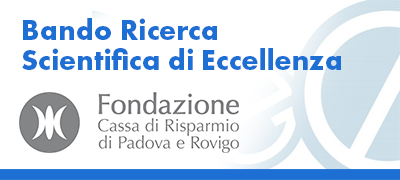
The Role of Bacterial Proteases in Thrombosis and Amyloidosis
Titolo: The Role of Bacterial Proteases in Thrombosis and Amyloidosis
Bando: Fondazione Cariparo – Progetto di Eccellenza 2018
Durata: 3 anni
Responsabile scientifico: Vincenzo De Filippis
Budget totale: 320.000 €
Abstract:
La malattie trombotiche (TDs) sono caratterizzate dalla formazione di coaguli patologici (trombi) e rappresentano la causa di ricovero ospedaliero e di morte più frequente nei paesi industrializzati. La formazione dei trombi è causata dalla trombina, un enzima capace di tagliare il fibrinogeno, generando polimeri insolubili di fibrina, e di aggregare le piastrine. L’invecchiamento della popolazione ha anche aumentato l’incidenza delle malattie amiloidosiche (ADs), come il morbo di Alzheimer e di Parkinson, e l’Amiloidosi Sistemica Senile, patologie caratterizzate dalla deposizione di aggregati proteici insolubili. Nonostante siano stati fatti molti sforzi per definire i fattori di rischio ambientali che causano queste malattie, tali studi hanno identificato specifici fattori di rischio, probabilmente per l’inadeguata conoscenza dei meccanismi biochimici che influenzano la coagulazione e l’amiloidosi. Negli ultimi anni, numerosi studi clinici hanno evidenziato connessioni tra infezioni batteriche e l’aumento del rischio trombotico o l’insorgenza di malattie da amiloidosi. Tuttavia, i meccanismi molecolari che sono alla base di queste relazioni, sono ancora sconosciuti. Il nostro Gruppo di Ricerca ha scoperto recentemente che la subtilisina, una proteasi secreta dal Bacillus subtilsis nell’intestino umano, è capace di tagliare la protrombina (un precursore inattivo della trombina) e di generare specie attive di trombina capaci di coagulare il sangue umano. Il nostro Gruppo ha dimostrato che la subtilisina è anche capace di tagliare la transtiretina, la proteina plasmatica coinvolta nell’insorgenza dell’Amiloidosi Senile, e di generare un fammenti che formano fibrille amiloidi. Il progetto BpiTA si propone di combinare competenze diverse e complementari nel campo della Biochimica, Gastroenterologia, Ematologia e Microbiologia con l’obiettivo generale di identificare nuovi meccanismi molecolari alla base dell’insorgenza di TDs e ADs, per poi delineare nuove e più efficaci strategie terapeutiche.



